28. October, 2023delish0
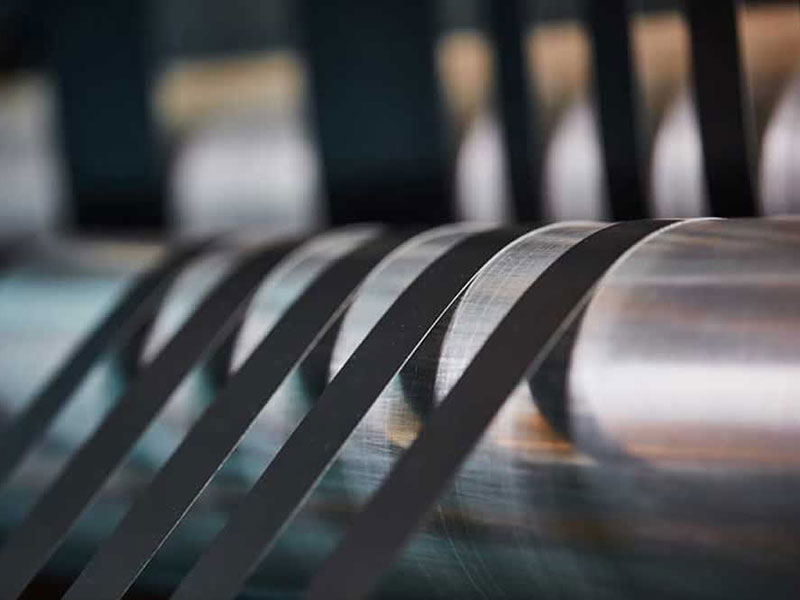
As the end link of tape production, the tape slitting machine can cut the coated wide coil according to a certain size to meet the user's different width needs for the finished tape. The quality of the tape slitting machine is not good, and it is easy to have quality defects such as bubbles and uneven cutting edges in the cutting process, and the high rejection rate causes a heavy burden to the tape manufacturer. The tape slitting equipment produced by Delish Machinery has high slitting accuracy and stable tension control, which is widely used in the slitting processing of BOPP tape, PET tape, PVC tape, medical tape, cloth tape, foam tape, kraft paper tape, masking paper tape, double-sided tape and other materials.
Development of tape slitting machine
In the early days, domestic tape companies invested a lot of resources in the research and development of front-end film making and coating, and the tape slitting machine was mainly imported equipment, and well-known brands such as CommScope of Germany, Fujitetsu of Japan, Atlas of the United Kingdom, etc. However, domestic small and medium-sized slitting machine manufacturers are still in the imitation stage of foreign equipment, lack of basic understanding of the physical properties of various viscous materials, and there is a huge gap in mechanical accuracy and system control, so the belt slitting market is generally developing slowly. Many tape manufacturers still use outdated equipment more than ten years ago, which causes a series of problems such as large material waste, many downtimes, long production cycles, low degree of automation and production efficiency, and the lack of competitiveness of products, especially under the influence of rising labor costs and raw materials.
With the rapid development of the flexible packaging industry, especially the large amount of BOPP and other packaging tapes, there is a huge and urgent market demand. On the other hand, many slitting equipment manufacturers have benefited from the accumulation of many years, and the production system and process have been quite mature, and they have gradually embarked on the road of independent research and development on the basis of digesting and absorbing foreign advanced tape slitting technology, changing the mode of copying and copying in the past. No matter in the slitting width and slitting speed has made great progress, from a simple manual/automatic cutting table to a semi-automatic/automatic slitting machine suitable for large-scale batch processing. With low price, good performance and perfect after-sales service, domestic tape slitting equipment gradually replaces imported equipment and continues to expand market share, while lowering the threshold for small and medium-sized tape manufacturers to upgrade their slitting systems.
Common types of tape slitting machines
Generally, according to the different ways of slitting, it can be divided into cutting machine and slitting winder. The coil cutting machine also becomes a cutting machine or cutting table, generally fixing the mother roll tape on the rotating shaft, the rotating shaft drives the coil to rotate under the drive of the motor, using the alloy round knife of high-precision material to cut on one side, and the width of the finished tape is determined by adjusting the position of the blade before slitting, and the silicone oil silicon solution cooling system can effectively prevent the cutter from sticking. For different sizes of materials, it can also be designed into a biaxial or multi-axis structure to improve the slitting efficiency. The shaftless coil cutting machine is suitable for materials with large weight and diameter to avoid bending deformation caused by coil falling. The automatic tape cutting machine automatically feeds and cuts, and can set the cutting width, times, angle and other parameters on the human-computer interaction touch screen, and the cutting and positioning system adopts servo motor control to accurately position, and the computer processes more than ten modes to automatically convert and cut the roll, which greatly improves the production efficiency.
The common slitting winder includes two forms: semi-automatic and fully automatic, the semi-automatic tape slitting machine generally needs to be used with the pipe cutting machine and the paper tube threading machine, and the paper core of the cut width is fixed on the inflatable shaft through the paper core loading and unloading machine, and the first operation needs to be manually arranged according to the specified slitting width. When slitting, the reel is unwinded, the transmission shaft and the rewinding shaft start to rotate, the cut strip tape is wound on the paper tube of the reel, and the waste edges at both ends are wound and collected on the independent shaft. At the end of the winding, the tape is manually labelled and cut off laterally. The automatic tape slitting machine developed by Delish Machinery adopts a manipulator to automatically rewind up and down, and the docking integrated paper tube machine makes the loading and unloading of the roll completely automated, and at the same time, the labeling and cutting process is automatically carried out after the winding reaches the set length, and the next round of slitting is entered through the turning shaft. The staff does not need any operation except for replacing the parent coil and disposing of the waste edges, which truly realizes the "fool-like" tape production.
Common problems in the application of tape slitting machines
1) Noise problem. Due to the strong stickiness of the tape parent roll, the material will produce a loud tearing sound during the unwinding process, and the noise will affect the hearing health of workers working for a long time. Generally, it will be solved by wearing earplugs, and some slitting machines are equipped with a sound-absorbing cover at the unwinding end to effectively isolate most of the noise.
2) Sticky knife problem. In the pre-coating process, the adhesive layer applied to the material creates adhesion to the round blade, which causes great wear and tear during high-speed slitting, and may affect the neatness of the slitting end face. Usually equipped with a nozzle above the cutter to spray anti-slime to ensure a smooth cut, you can also add an appropriate amount of anti-rust oil to protect the blade from erosion. In addition, timely tool change and sharpening are also the key to ensure cutting quality.
3) Poor tension control. Stable tension is the top priority in the process of tape slitting, too little tension will cause uneven end face or bubbles, too much tension will cause excessive stress in the film roll to cause deformation or even breakage. The change of the diameter of the rewinding and unwinding will cause the fluctuation of tension, the general unwinding part adopts constant tension control, and the winding part adopts taper tension control with the increase of the roll diameter, usually the tape slitting machine manufacturer will establish an algorithm model for users to adjust the parameters. Users need to combine the properties of different materials to find the most suitable slitting parameters in practice.

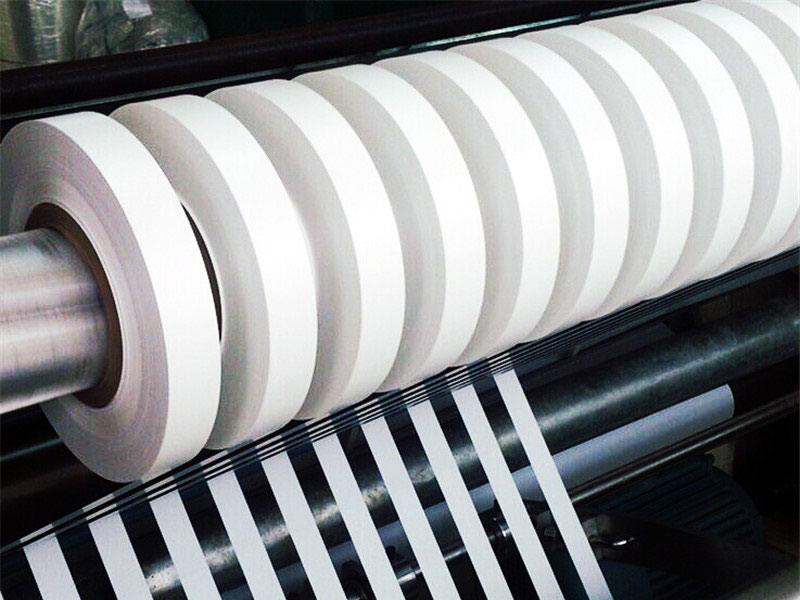
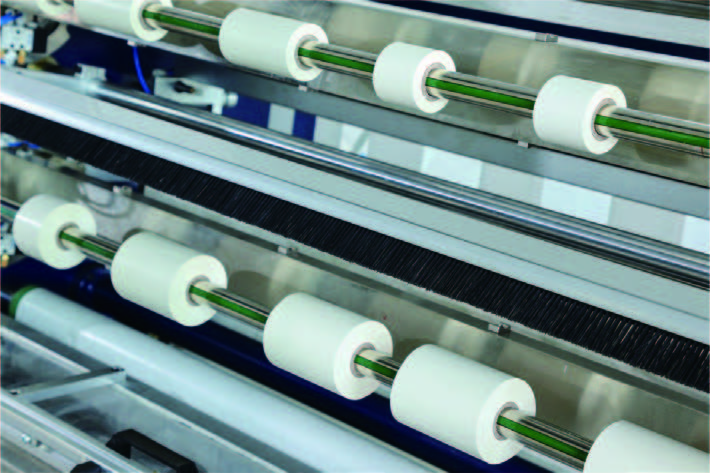
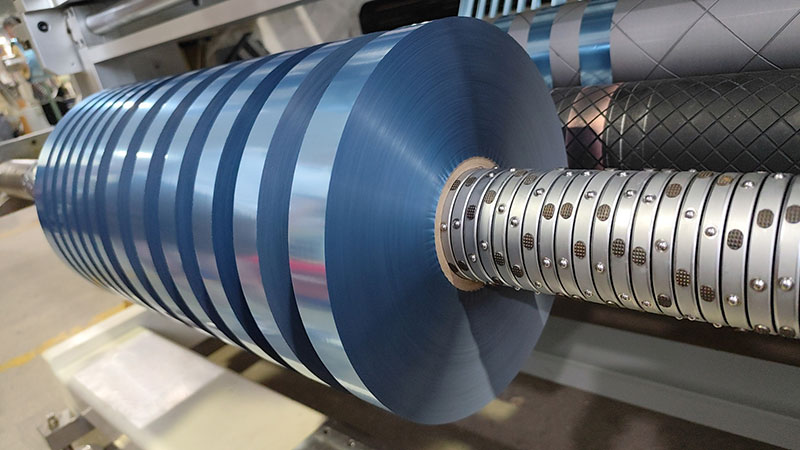
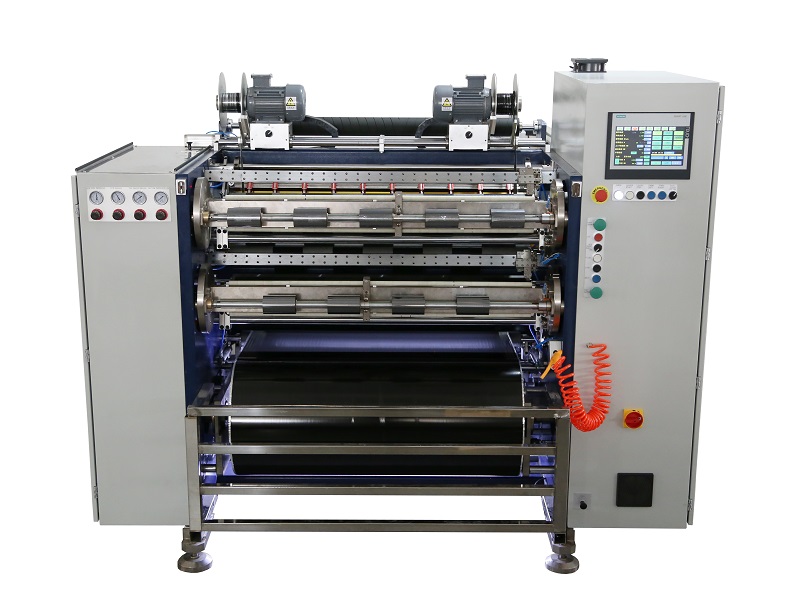 Fully Automatic TTR Slitter RSDS8 Plus
Fully Automatic TTR Slitter RSDS8 Plus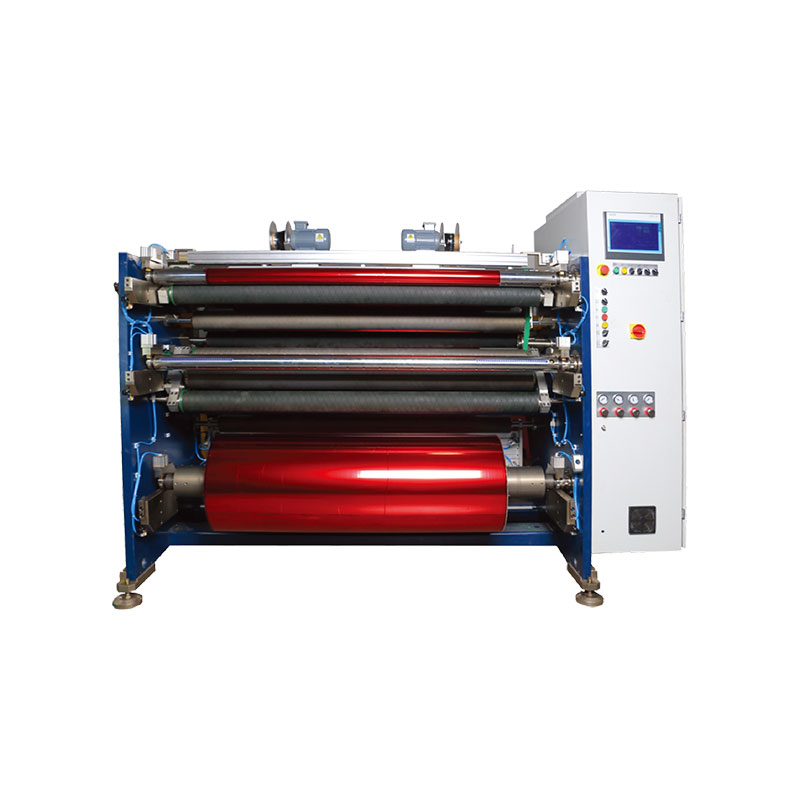 Hot Stamping Foil Slitter 1600mm
Hot Stamping Foil Slitter 1600mm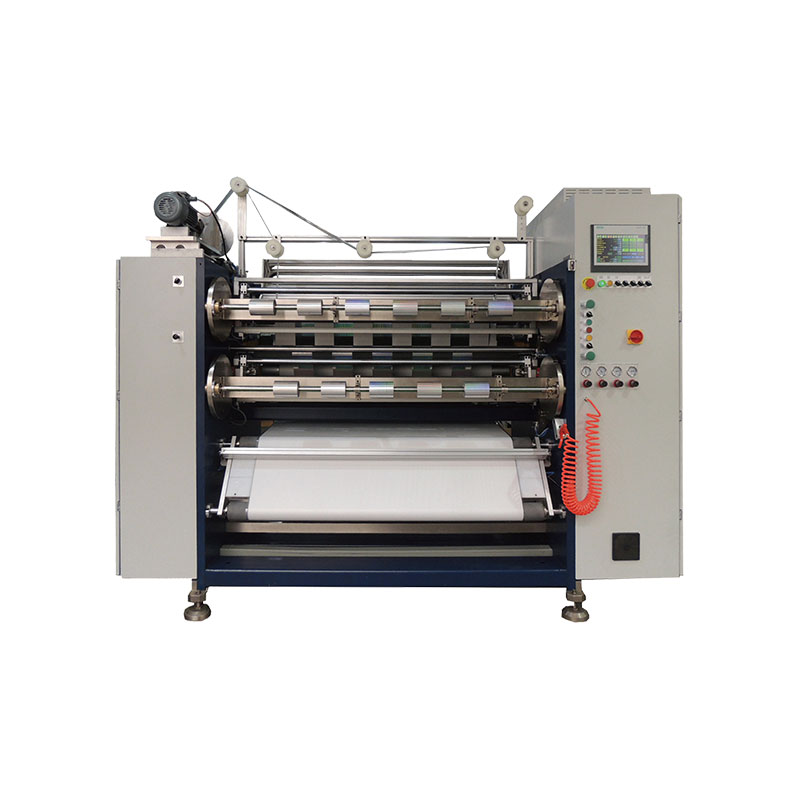 Hot Stamping Foil Slitter (4 Shafts)
Hot Stamping Foil Slitter (4 Shafts)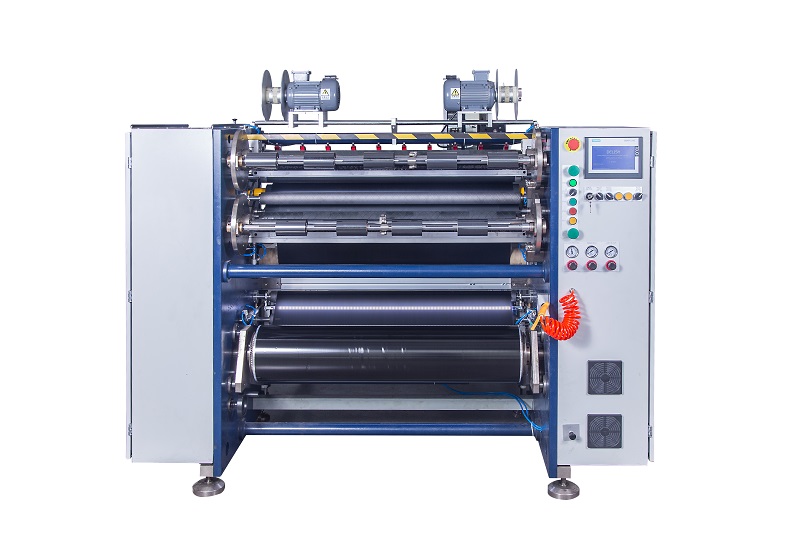 Semi-Auto TTR Slitter RSDS2 Plus
Semi-Auto TTR Slitter RSDS2 Plus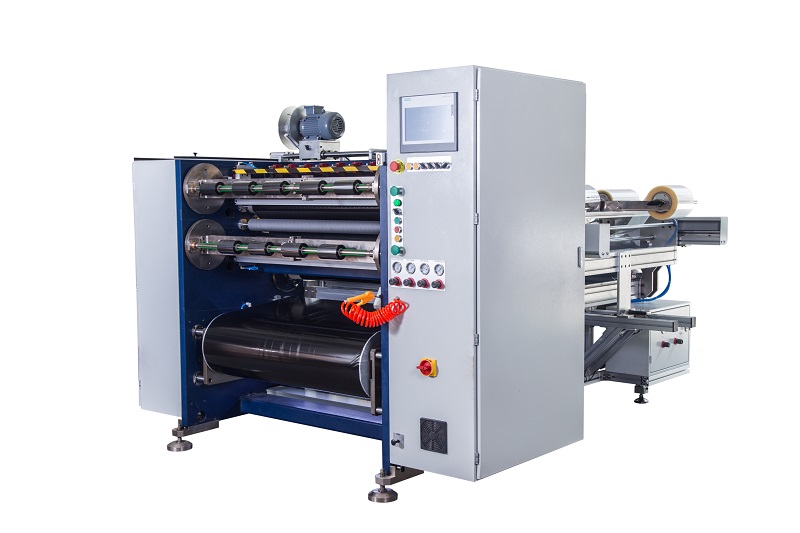 Semi Automatic TTR Slitter RSDS5 Plus
Semi Automatic TTR Slitter RSDS5 Plus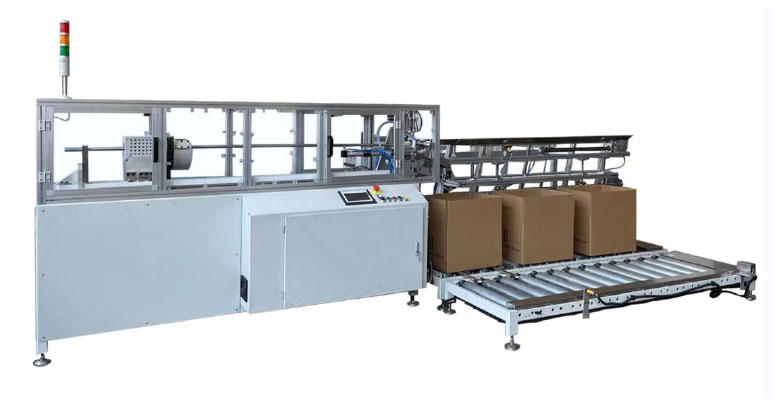 Auto Paper Core Cutter
Auto Paper Core Cutter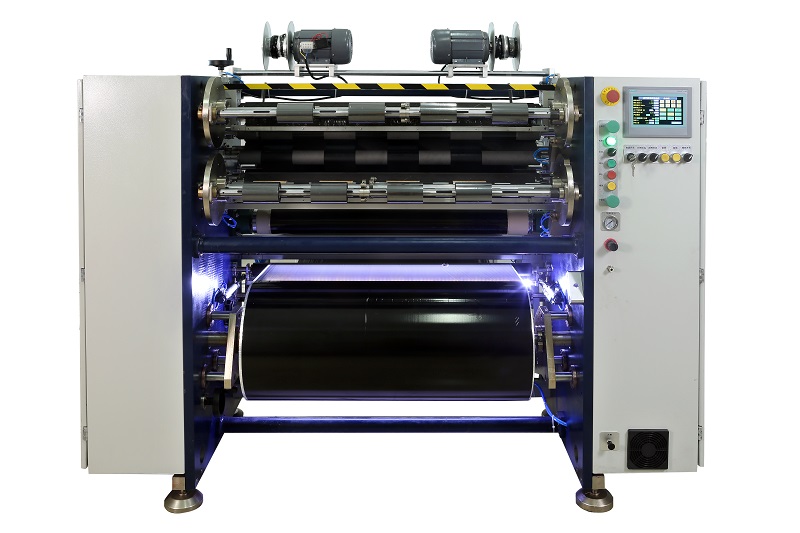 Manual TTR Slitter RSDS2
Manual TTR Slitter RSDS2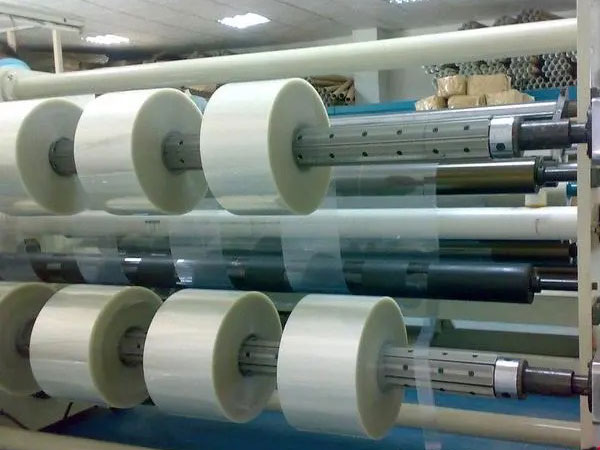 Film Slitting Machine
Film Slitting Machine





